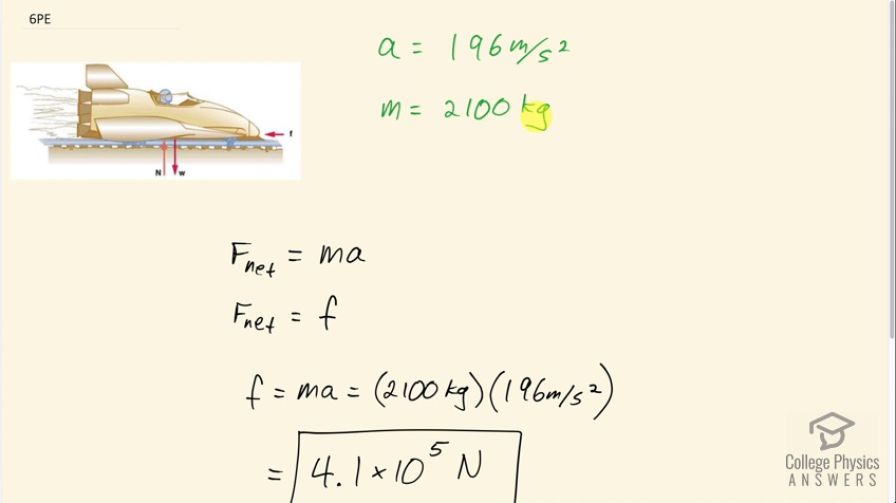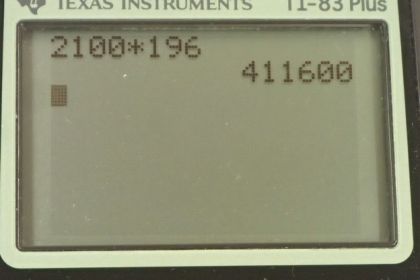
Solution video
OpenStax College Physics, Chapter 4, Problem 6 (Problems & Exercises)

Calculator Screenshots
Comments
Why isn't it - 4.1x10^5 N given that force is in the right to left direction?
Thank you,
S
Hi sergio, thank you for the question, and good careful observation. Conventionally, yes, toward the left is considered the negative direction, but the coordinate system can be chosen as the problem solver wishes. I should have made it more clear and explicit that I was choosing left to be the positive direction. The choice is implied by the positive acceleration given in the question. Positive acceleration doesn't mean "speeding up", but rather it means "a change in velocity in the positive direction". Since the question gives a positive value for the acceleration, and the acceleration is to the left, that means left is, breaking with convention, positive in this particular question. To be more explicit I should gave drawn an arrow pointing to the left with a positive sign above it to indicate an unconventional choice of coordinate system.
All the best,
Shaun
Hello Shaun,
The problem states that this rocket is decelerating, therefore the objects acceleration is opposing the motion, if we set up our coordinates for motion to be positive going to the right, then that would mean both acceleration as it is decelerating would be negative as it is going to left. would I still be correct to give the answer in a negative form? As isn't acceleration proportional to force?
Hi johnrbolo, thank you for your question. I should have been explicit with choosing the coordinate system as positive to the left. If you make the conventional choice and have positive to the right, then acceleration and force would both be negative since they are both directed toward the left. The sign of the answer depends on the direction of the coordinate system.
Hope this helps,
Shaun


